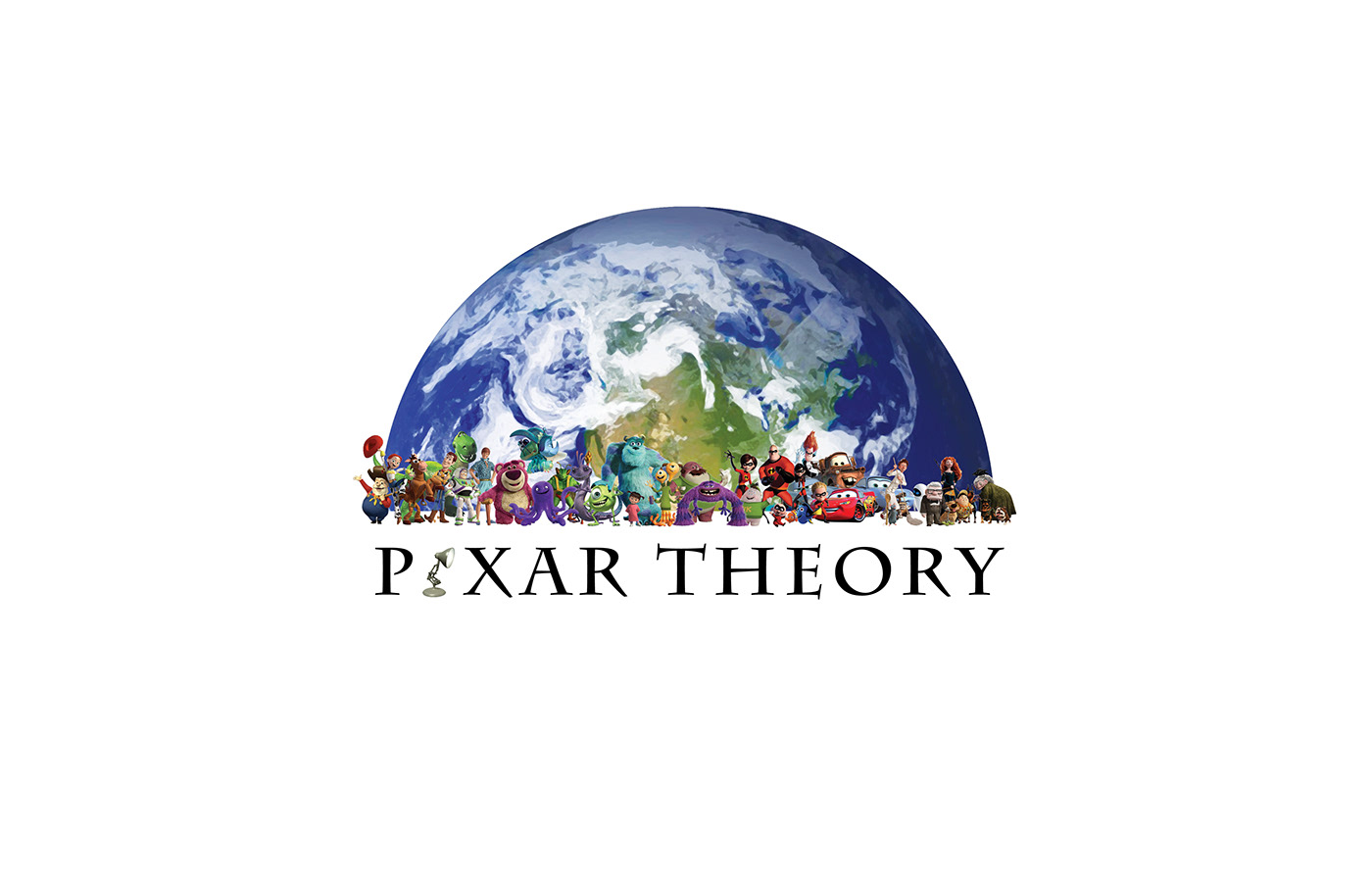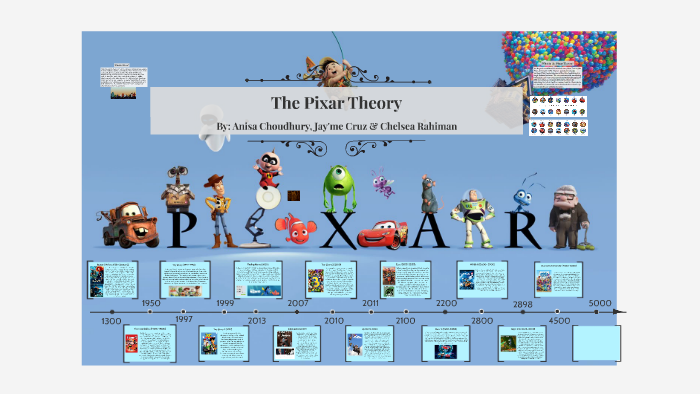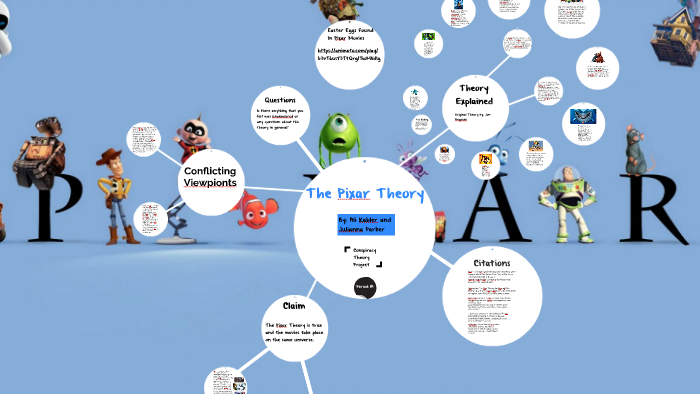

Wood carving of Sulley in the witch’s shack in Brave.Ī proliferation of material around the Pixar theory draws attention to its paratextuality and the ongoing process of meaning-making. (2001, by Pete Docter) in the witch’s shack in Brave (see respectively figures 2 and 3), and cross-over character appearances.įig. The Pixar theory further invites a detective-like hunt for ‘Easter eggs’ from the Buy-n-Large (BNL) batteries that power the toys in Toy Story (the corporation running everything in Wall-E ), to a wooden carving of Sulley from Monsters, Inc. The Pixar theory not only encourages (re)watching films released over a 20 year period – beyond any single generation or period of ‘childhood’ – but those (re)viewing the films are most likely outside the age conventionally targeted. This results in certain generations forming ties to the films and franchises released during their childhood, and not necessarily beyond. Screen texts for children generally have discrete narratives, are self-contained within their franchise, and have a reasonably stable viewing age of between 4 and 10 years old. This alone subverts traditional engagement with children’s animation. The Pixar theory falls in the latter.Įngaging with the Pixar theory requires reading the films it incorporates in a specific (and alternative) way that is, in a narrative chronologically with an overriding narrative arc. Some fan-generated materials support industry frameworks by building on narratives and providing back stories, while others are subversive and challenge dominant readings by positing alternative interpretive strategies (Gray 2010: 44). Such engagement provides an insight into the impact of a community of audiences on meaning-making and the ever-changing way audiences read and make sense of texts. Not only is the Pixar theory developed by a fan, but it has been widely shared with other fans. This notion is premised on Henry Jenkins’ (1992) assertion of the active, participatory role audiences play in constructing and circulating meaning.

As Lincoln Geraghty observes, ‘we are now accustomed in fan studies to stating that the productivity of fans and their related fan practices represents an appropriate and worthy text to study just as much as the media text to which they are related or inspired by’ (2015: 1). However, widespread Internet access has facilitated diversification in the production of paratextual material.įans and fandom are central to paratextuality. Many are endorsed by the authors, producers or distributors of the texts. Johnathan Gray acknowledges the pre-determining nature of such texts and suggests that the paratext ‘infringes upon the text, and invades its meaning-making process’ (2006: 36). In film and television paratexts take, among others, the form of trailers, promos, reviews and interviews with creative personnel, and are often circulated prior to the film or television show’s release. In publishing, this includes a book’s title, cover, cover art, front matter, back matter, font and other details that frame the way a text is read. In other words, it is what Cronin identifies as ‘all those ancillary elements that coexist and co-mingle with the text proper’ (2014: xvi). First introduced by Gérard Genette, paratextuality is the engagement between a text and the associated surrounding material that contextualizes it (Genette 1997: 1). Specifically, I will focus on how it impacts the meaning-making process and who it engages. My interest here is not in the details and validity of the theory, but in its paratextual relationship to the Pixar films.

The Pixar universe timeline according to the Pixar theory.

CFP dedicated to accepted SAS 2020 presenters.The Persistence of Walt Disney’s Snow White and the Seven Dwarfs.The Interdisciplinary Opportunity of Animation.Technological developments in animation II (the post digital).Technological developments in animation I (pre-digital).Past and Present of Independent Animation.Norman McLaren Centenary: McLaren and Movement.New Theoretical Approaches in Animation.Animation Franchises and the Studio System.


 0 kommentar(er)
0 kommentar(er)
